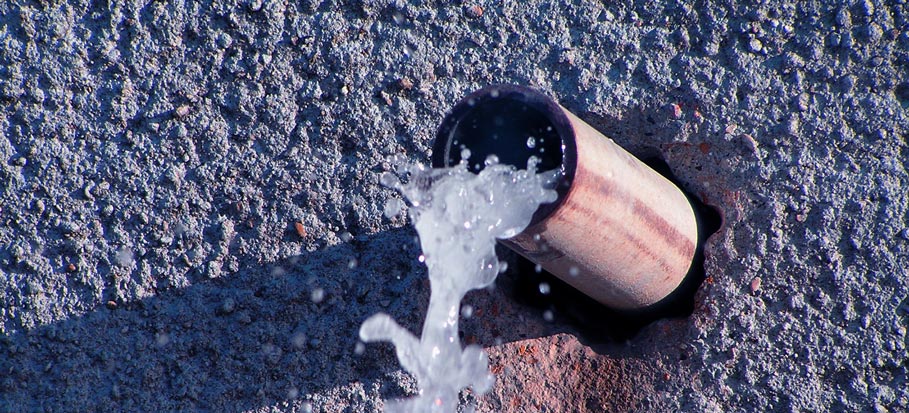Overview To Water Leakage Detection At Home
Overview To Water Leakage Detection At Home
Blog Article
Everybody may have their unique way of thinking involving Finding hidden leaks.

Early detection of dripping water lines can minimize a possible catastrophe. Some small water leaks may not be noticeable.
1. Examine the Water Meter
Every home has a water meter. Checking it is a surefire way that aids you find leakages. For starters, turn off all the water sources. Make certain nobody will certainly flush, make use of the tap, shower, run the cleaning equipment or dishwasher. From there, most likely to the meter and also watch if it will certainly transform. Considering that no one is utilizing it, there ought to be no motions. If it moves, that suggests a fast-moving leakage. If you detect no modifications, wait an hour or 2 as well as examine back again. This implies you might have a sluggish leak that might even be below ground.
2. Inspect Water Usage
Assess your water bills as well as track your water consumption. As the one paying it, you ought to see if there are any inconsistencies. If you identify sudden changes, despite your intake coinciding, it means that you have leakages in your plumbing system. Keep in mind, your water expense should fall under the exact same range each month. An unexpected spike in your expense indicates a fast-moving leakage.
Meanwhile, a steady increase monthly, despite having the very same routines, shows you have a slow leakage that's additionally slowly escalating. Call a plumber to completely check your residential or commercial property, specifically if you feel a cozy area on your flooring with piping underneath.
3. Do a Food Coloring Examination
When it comes to water consumption, 30% comes from toilets. If the color in some way infiltrates your bowl during that time without flushing, there's a leak between the tank and dish.
4. Asses Outside Lines
Do not fail to remember to examine your outdoor water lines also. Should water permeate out of the link, you have a loose rubber gasket. One tiny leak can squander tons of water and spike your water bill.
5. Inspect and Analyze the Situation
Homeowners need to make it a behavior to examine under the sink counters as well as even inside closets for any type of bad odor or mold development. These 2 red flags show a leakage so timely attention is called for. Doing routine evaluations, even bi-annually, can conserve you from a major issue.
Inspect for discolorations as well as weakening as the majority of pipes and also home appliances have a life expectancy. If you suspect dripping water lines in your plumbing system, do not wait for it to escalate.
Early discovery of dripping water lines can mitigate a prospective calamity. Some little water leaks may not be visible. Examining it is a surefire way that assists you find leakages. One tiny leak can lose bunches of water and spike your water bill.
If you think leaking water lines in your plumbing system, don't wait for it to intensify.
WARNING SIGNS OF WATER LEAKAGE BEHIND THE WALL
PERSISTENT MUSTY ODORS
As water slowly drips from a leaky pipe inside the wall, flooring and sheetrock stay damp and develop an odor similar to wet cardboard. It generates a musty smell that can help you find hidden leaks.
MOLD IN UNUSUAL AREAS
Mold usually grows in wet areas like kitchens, baths and laundry rooms. If you spot the stuff on walls or baseboards in other rooms of the house, it’s a good indicator of undetected water leaks.
STAINS THAT GROW
When mold thrives around a leaky pipe, it sometimes takes hold on the inside surface of the affected wall. A growing stain on otherwise clean sheetrock is often your sign of a hidden plumbing problem.
PEELING OR BUBBLING WALLPAPER / PAINT
This clue is easy to miss in rooms that don’t get much use. When you see wallpaper separating along seams or paint bubbling or flaking off the wall, blame sheetrock that stays wet because of an undetected leak.
BUCKLED CEILINGS AND STAINED FLOORS
If ceilings or floors in bathrooms, kitchens or laundry areas develop structural problems, don’t rule out constant damp inside the walls. Wet sheetrock can affect adjacent framing, flooring and ceilings.
https://www.servicemasterbyzaba.com/blog/how-to-detect-water-leakage-in-walls/

Hopefully you enjoyed our section about Hacks to detect leaks. Many thanks for finding the time to read our posting. Kindly take the opportunity to distribute this blog entry if you liked it. We cherish reading our article about Top leak detection hacks.
Report this page